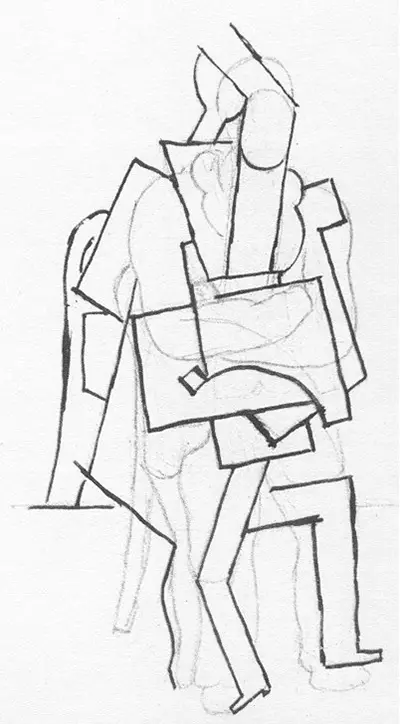The drawing shows harsh geometric angles that compose a figure of a man. This almost savage brassiness can signify the simplicity and directness of the male form. In comparison, ‘Seated woman’ also by Picasso is all complicated shapes and vibrant patterns hinting at the much more complex and dynamic ‘woman’. The ‘man’ seems almost melancholic with these frugal shapes but there is a type of unquestionable assuredness about him.
The sketches may represent the genuine struggles of human psyche and this could have been Picasso’s way to understand complex emotions that all of us express but not all of us know how to deal with. As other similar works by Picasso, this sketch tries to disassemble the human form and look at it in a one simple way. When multitude of nonsensical patterns are deconstructed for one viewpoint it creates a wider context which enable a greater ‘vantage point’ for ideas about the world around us. ‘Seated man with his arms crossed’ is a typical but outstanding example of this critical thinking. The sketch seems to declutter and then piece together this almost ‘bogus’ but nevertheless strong form which in turn makes the ‘idea’ of this sketch seem almost pliant and accommodating for our own deconstruction.
The impact of sketches such as ‘Seated man with his arms crossed’ is pivotal and symbolic for modern life and technological developments that were waiting to happen a hundred years later. This drawing is almost futuristic in its originality and inspirational to people who wanted to stop asking permission and be their own creators. In a greater context sketches like these motivated future generations to look at life as a whole and then declutter it and develop the life that makes them happy rather than conforming to others’ idea of what true happiness means.

